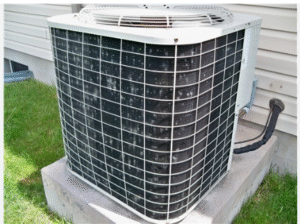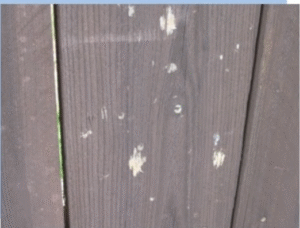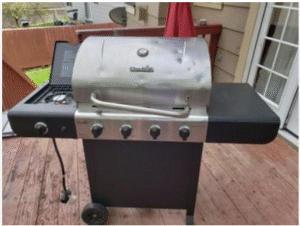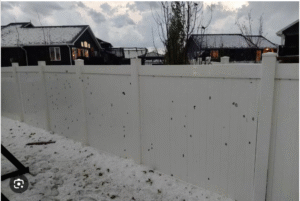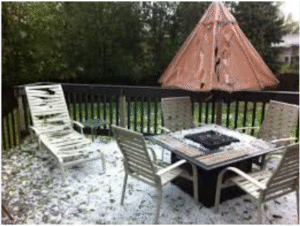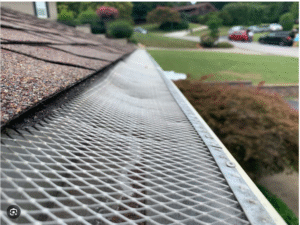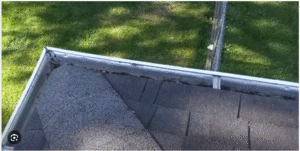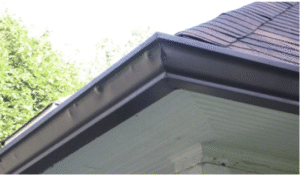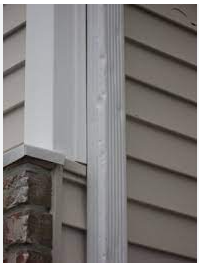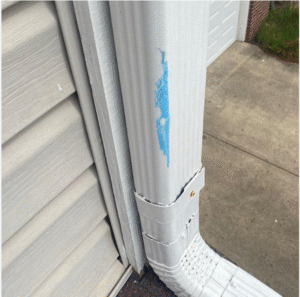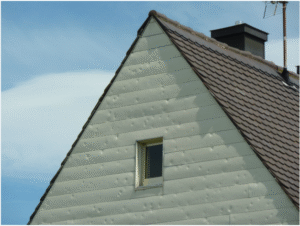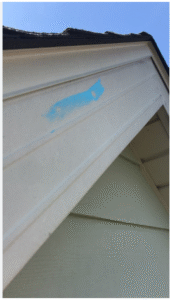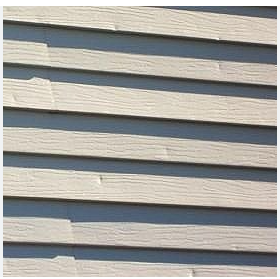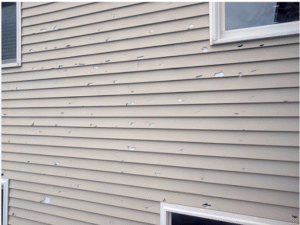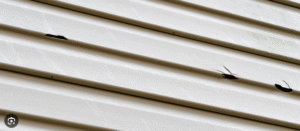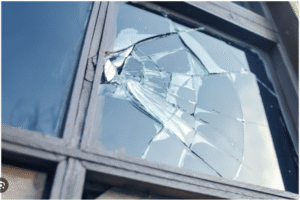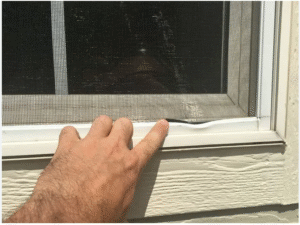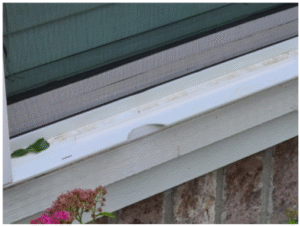After you have questioned down and figured out where the homeowner is at in their process you know need to inspect the home. The purpose of the inspection is to verify their is damage and present it to the homeowner so they can make an educated decision if they need to make a claim or not. Reminder that if they have damage and do not make a claim they will be liable the repairs.
Inspecting For Hail Damage
- Collateral damage. Try to get the homeowner to walk around the house with you and look at everything they have laying around for hail strike damage. You will also look at the gutters and siding that we will talk about in the next two sections. Items to look at and what to look for. Vehicles, dents on vehicles if the storm was bad enough and they were exposed, sometimes even broken windows. Grills are also easy to spot dents on as they are metal and usually exposed. Turning chalk on it’s side and coloring over the dents can expose these if they are hard to see. Solar lights or other lighting fixtures can be broken our have marks. Look closely at the landscaping and see if it has missing leaves, holes in leaves or broken limbs. You can sometimes see grayish marks on decks that indicate hail strikes. Fencing will tend to be dented when metal, broke if vinyl, or marks if wood. Sometimes planters can be plastic and damaged from hail. Always check AC condenser units for dents and also look at the fins on the unit as hail will smash these down as well. Look at window wraps if the home has them as it is a soft metal and can dent easily. Check patio furniture and any items that are laying around that can sustain hail damage. When you are meeting with the adjuster you will want to make sure and point all this out as well as it will add to the homeowners coverage and increase the amount they receive. Don’t just limit your search to around the house closely. If they have items in the yard and surrounding areas on the property make sure to check them as well. This is where you can show you are the professional and the right person to help them maximize their claim. The more you get covered the more options it gives a homeowner to try and gain extra cash or cover the deductible or cover where coverage may be lacking. Most people are ok living with a dent or two in things like grills or fencing and won’t be required to fix it but will receive funds for this damage.
- Gutters. Gutters are an early indicator of hail strikes, as well as any soft metals. Pay attention to which way the storm would of came from as it tends to come down at an angle of some sort which would make looking for hail marks on downspouts on the opposite side of the house difficult. Starting at downspouts are the best place because if you can find dents while on the ground it is easy to show the homeowner without photos. If the gutters have damage a very good chance other areas do as well. See photos below of what to look for in the downspouts and gutters. An Easy way to look for dents it to turn a piece of chalk or specialized marking crayon on it’s side and run it over suspected areas. The area with the dent as it doesn’t show the chalk.
- Siding. Siding is also another on that is easy to look for and something the homeowner can see from the ground as well. The best place to start is going to the side of the house from which the storm came from. With vinyl you are looking for cracks, holes, and any other damage. Aluminum you are looking for dents. You can also look for dents in the fascia, garage doors, entry doors, and any other metal on the house. Also check the screens on the windows for damage and rips due to hail. The same trick applies with using a piece of chalk on it’s side to see the dents.
- Windows. Windows can also sustain damage from hail. The obvious issues is it can lead to are broken or cracked glass. The frames can be damaged as well and missing chunks, dents, . Both pose a major concern for longevity and functionality. Screens are very common to be damaged and covered from hail. Another great place to start with the homeowner as they can see it and understand why it affects them.
-
Types of Hail Damage to Roofs (Our Main Target)
1. Asphalt Shingles
-
Bruising: Hail can cause soft spots or indentations, which may not be visible but can be felt by touch. These lead to cracks in the 2nd layer of the asphalt weather guard layer. These cracks are not seen from topside and with expansion and contraction over time will lead to further damage to the home.
-
Granule Loss: The protective granules on shingles can be knocked off, exposing the asphalt underneath. This leads to faster aging and UV damage. You sometimes will notice an excessive amount of granule loss in the gutters or on the ground below the roofs edge.
-
Cracking: Large hailstones can crack shingles, particularly if they’re already aged or brittle. These would be cracks in both asphalt layers and are sometimes seen from topside as well.
-
Edge Damage: Hail can chip or crack shingle edges, making them more prone to wind damage.
- Soft Metals: Any soft metals in the form of pot vents, flashing, HVAC pipes, skylight frames, or any other exposed metal can be a good indicator of roof damage and disrupt the proper water flow.
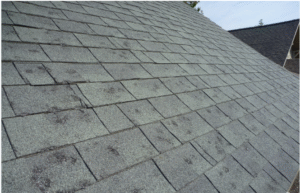
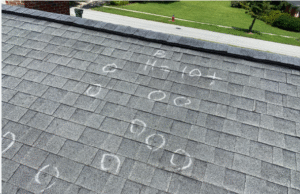
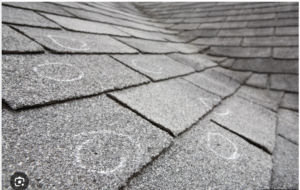
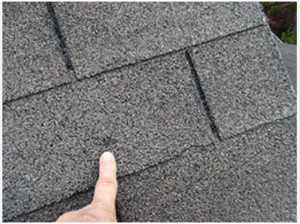
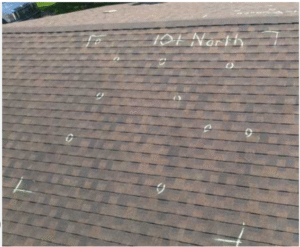
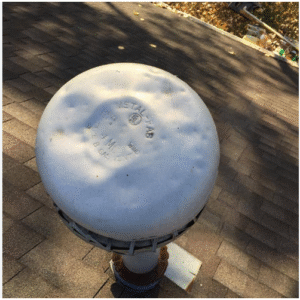
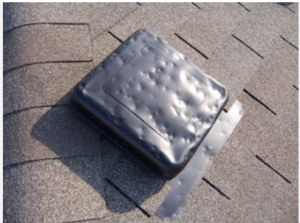
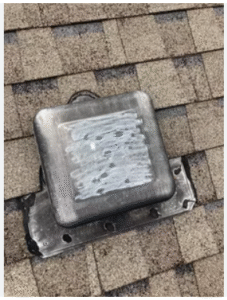
-
2. Metal Roofs
-
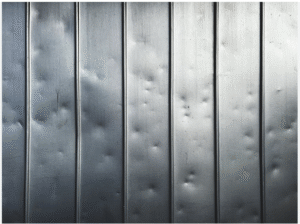
-
Dents: Cosmetic dents may form, especially on thinner metal panels.
-
Coating Damage: If the protective coating is compromised, it can lead to rust over time and also disrupts the proper water flow from the rooftop.
-
Seam and Fastener Issues: High-impact hail may cause seams to loosen or fasteners to shift.
-
-
3. Tile, Slate, or Wood Roofs
-
Cracking/Breaking: Hail can easily crack or break more brittle materials like clay, slate, or wood shakes.
-
Dislodging: Tiles or slates can become loose or fall off entirely.
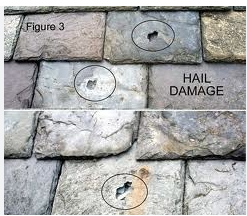
Signs of Hail Damage
-
Random damage with no clear pattern
- Dents in the roof where the granules can be seen pushed in out out of the shingle
-
Black or shiny spots (from missing granules)
-
Soft or spongy shingles
-
Exposed roof underlayment or felt
-
Damage to flashing, gutters, vents, and skylights
-
Granules in gutters or downspouts
-
- A general rule of thumb for coverage is mark a 10′ X 10′ section in chalk on the roof. Choose an area with the most strikes. If you can circle 8-10 strikes you have a great chance for a claim.
-
